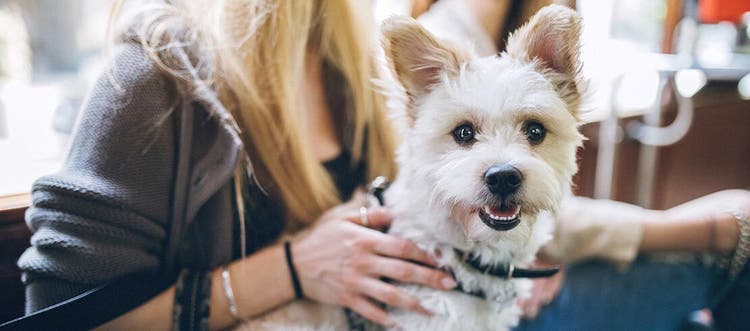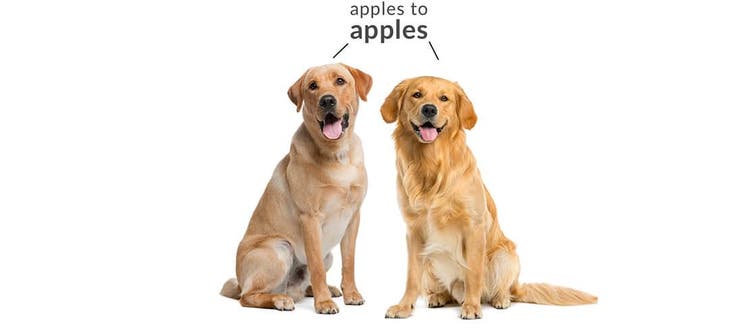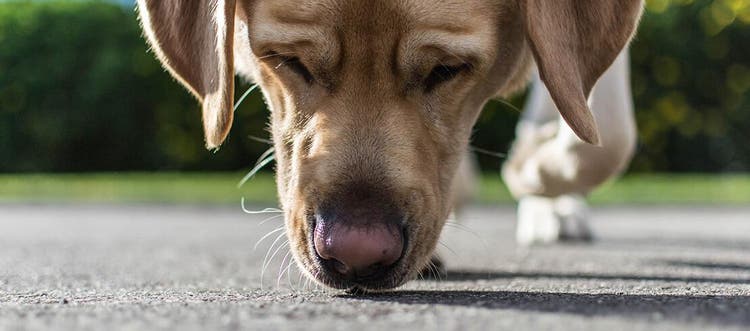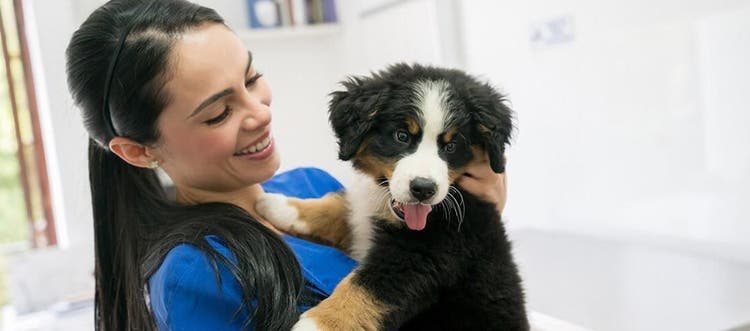Keep your dog looking great and feeling healthy with our grooming and bathing tips.
Regular grooming is important for dogs of all breeds – it helps them maintain a shiny, tangle-free coat, gives you the chance to check for parasite infestations and skin issues and improves their overall hygiene. Plus, grooming can be a one-on-one bonding experience for you and your pet.
Even dogs with short, low-maintenance coats need bathing and nail trimming, and can benefit from regular brushing. Dogs with longer coats may also need clipping and hair trimming. While you may wish to schedule regular appointments with a professional groomer – especially when it comes to clipping and trimming your dog’s hair – these seven tips will help you establish an at-home grooming routine with your dog.
1. Regularly brush your dog’s coat to prevent matting
Regardless of breed, regular brushing will help keep your dog’s coat shiny and glossy. The amount of brushing per week depends on your dog’s coat length and texture. Longhaired breeds like golden retrievers and collies will need more frequent brushing (at least once a week, if not every other day), while shorthaired breeds like greyhounds or labradors may need a good brushing only every other week.
For longhaired dogs, badly matted hair can cause pain. Dogs will lick or bite themselves at the source of irritation, which may result in skin infections. Foreign bodies like grass seeds can hide inside a matted coat and can even burrow into the skin to cause an abscess. Matted hair may also make it harder to locate deadly paralysis ticks. Regularly brushing your longhaired dog prevents matting from becoming a problem.
Shorthaired dogs benefit from brushing, too. Brushing removes loose hair, dirt and dander from your dog’s coat, extending the time between baths.
2. Trim your dog’s hair – but use caution
Most dog owners prefer to take their dog to a groomer to have their dog’s hair cut. That said, if you proceed carefully you can trim overgrown hair around your dog’s eyes or paws in between professional groomings. Trimming the hair around your dog’s eyes can prevent overgrown hair from blocking their vision and rubbing against and damaging their eyes.
Always wait until your dog is calm and preferably lying down. Move slowly and calmly and use extra caution when scissor blades are near the skin. Make sure to reward your dog with a treat after you’re finished.
Trimming the hair inside the ears can improve air movement and help prevent ear infections. However, this is best done by an experienced groomer or at your vet clinic. Plucking hair from ears is not something to do at home. If you’re worried about the amount of hair growing in your dog’s ear, it’s best to speak to your vet.
Remember: it’s easy to accidentally cut your pet with scissors or clippers. Always take care when trimming, and if you’re nervous or would prefer not to trim your dog’s hair yourself, turn to a professional grooming service.
3. Safely trim your dog’s nails
Trim your dog’s nails when you hear them clicking on the hard floors in your home. This will prevent your dog from experiencing discomfort from overly long nails. However, before you trim your dog’s nails for the first time, you’ll need a few safety tips. Get the complete step-by-step guide to cutting your dog’s nails safely and easily.
4. Check your dog’s skin as you groom
Allergic skin diseases are common in dogs, causing itchiness and making them scratch, chew or lick their skin. In addition to making your pet miserable, external parasites like fleas, ticks, lice and mites can transfer diseases or other parasites like tapeworm.
Make a habit of checking your dog’s skin every time you groom them. Start by running your fingers through your dog’s coat, feeling its skin for unusual lumps or bumps. You can investigate further by parting the coat to examine the skin more closely for sores, redness, rashes, bald spots and evidence of parasitic infestations.
For optimal control of parasites, prevention is definitely better than cure. Here are some options you could consider to keep your pet protected:
Advocate™ is a convenient monthly spot-on that works fast against fleas, stopping reinfesting adult fleas from biting within 3-5 minutes and killing them within an hour. Plus, Advocate kills larvae in your dog’s surroundings and is water resistant.* Advocate also protects dogs against other parasites, including deadly heartworm, most major intestinal worms, oesophageal worm and mites.
If you prefer a collar for protection against fleas, SerestoTM is an excellent choice, providing 8 months protection against fleas and deadly paralysis tick.*
If an oral treatment is the best option for your dog, Credelio PLUSTM is a tasty monthly chew that protects against fleas, ticks, intestinal worms, heartworm and demodex mites.
For more information on fleas and flea control, visit Fleas and flea control: everything you want to know.
If you need help choosing the best flea protection for your pet, reach out to your vet or our Animal Health Consultants on 1800 995 709 for professional advice.
*Read product leaflet for full instructions.
5. Teach your dog to enjoy grooming sessions
Many dogs, especially puppies, need encouragement and positive reinforcement when you first introduce them to a grooming routine.
These tips will help the first few at-home grooming sessions go smoothly:
- Spread a little Vegemite on a washable surface and allow your dog or puppy to lick it off while you brush or wash them
- Take things slowly and give lots of treats and praise so your pup will look forward to its next pampering session
- Before bath time, lay a slip-proof mat in the tub to prevent your dog from sliding around
6. Regularly check your dog’s ears
While grooming your dog, remember to take a closer look at its ears. Ear infections can be painful, so if you notice any of the following changes or behaviours, take your dog to your vet for a check-up:
- The inside of the ears is inflamed or moist
- The ears smell odd (often, the smell of a dog ear infection is sweet)
- Your dog shakes its head or scratches at its ears
- The ears contain more or a different kind of discharge than usual (a little wax is normal)
- Whines or yelps when you examine the dog’s ears
7. Don’t bathe your dog too often
Most dogs with healthy skin only need to be bathed every couple of months to prevent hygiene issues and unpleasant odours. Bathing your dog more often than this can strip the natural oils from its coat and dry out its skin.
If your dog smells bad but hasn’t rolled in something awful, then you should discuss this with your vet. Underlying issues may indicate dental disease or a skin infection.
When bathing your dog, keep these tips in mind:
- A dog’s skin has a different pH level from humans, so never use baby or human shampoo. Choose a soap-free shampoo specially formulated for dogs, which will be gentle on their skin
- Pour warm water over your dog until it is thoroughly wet then gently massage the shampoo into the coat. Avoid the dog’s eyes, mouth and the insides of its ears
- Rinse the shampoo off with warm water, then let your dog shake and air-dry outside, if the weather is warm. In cooler weather, gently towel-dry the coat or blow-dry it using the coolest setting
Good grooming, periodic bathing and regular skin and ear checks not only help keep your dog healthy, they demonstrate your love for your pet and help give you quality time together.
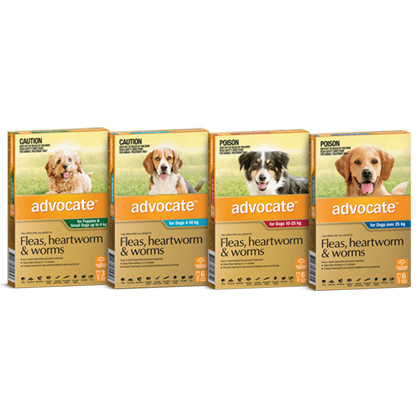
Advocate for dogs
Advocate provides fast relief from fleas, prevents deadly heartworm and helps protect your dog and your family from most intestinal worms

Seresto flea & tick collar for dogs
Seresto provides dogs with long-lasting flea protection for 8 months and tick protection for 4 months
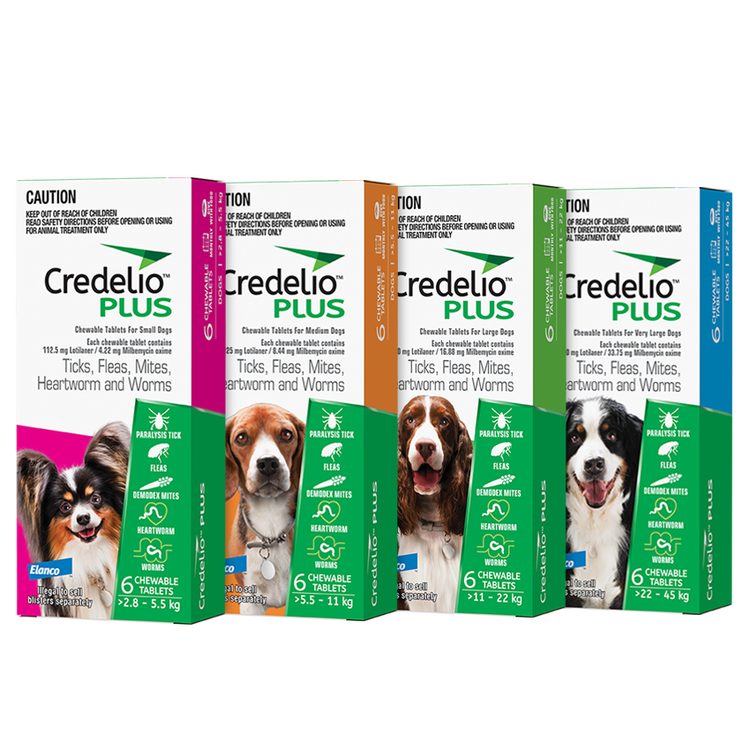
Credelio™ Plus 4 in 1 protection in the smallest chew
Keeps your dog protected from ticks, fleas, demodex mites PLUS heartworm and intestinal worms.
